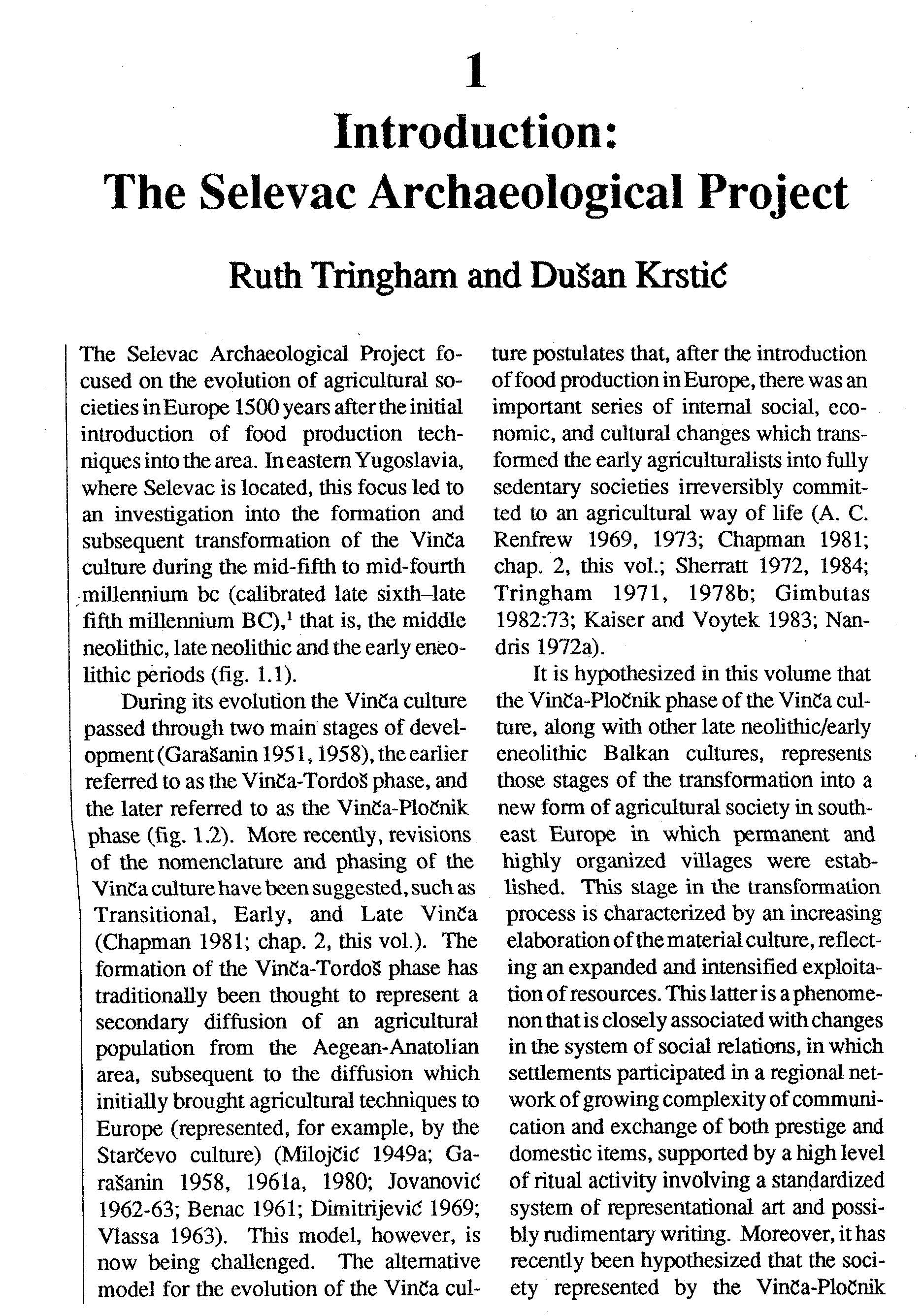
Introduction: the Selevac Archaeological Project (1990)
The authorship of this chapter is attributed to myself and Dusan Krstic, although in fact I was its sole author. Among other things, I set the scene in this chapter for the research structure of the project around a Middle Range Research design, very much mainstream Processual (New) Archaeology. Lest we forget, the Selevac project started in 1976, when not only Processual Archaeology was in its heyday, but I was in the middle of mapping out the Middle Range research design of contact trace analysis of lithics (see Tringham 1978 Leapfrogs). Even though by the time I wrote this chapter (1988), I had left lithic microwear analysis (and social evolutionary models) behind in favor of architectural use-lives and social relation of production, I was still very much in favor of middle range research analysis.
Abstract
The first chapter describes the original aims of the Selevac project, and the evolution of its general theoretical basis. The project focussed on tracing and explaining the transformation of resource utilization during the 500 years of the site’s occupation (ca. 4750-4250 BC) in the hills south of the Danube River in Yugoslavia. The project was the first in East Europe to investigate (and demonstrate) the relationship between the intensification of production and growing permanence of settlement of late Neolithic societies. This same chapter then describes the main post-excavational research design of a series of Middle Range analytical strategies which had not been used before in East Europe to examine resource production (procurement, manufacture, consumption and redistribution).
Citation
Tringham, Ruth (1990) Introduction: the Selevac Archaeological Project. In Selevac: a Neolithic Village in Yugoslavia, edited by R. Tringham and D. Krstic, pp. 1-12. Monumenta Archaeologica No. 15. Institute of Archaeology Publications, UCLA, Los Angeles.
Reviews
Brad Bartel (1993) American Antiquity 58 (3): 590
Peter Bogucki (1992) Journal of Field Archaeology 19 (2): 219-222
John Nandris (1993) Antiquity 67 (255 June): 459-461
Download links
Research Gate
